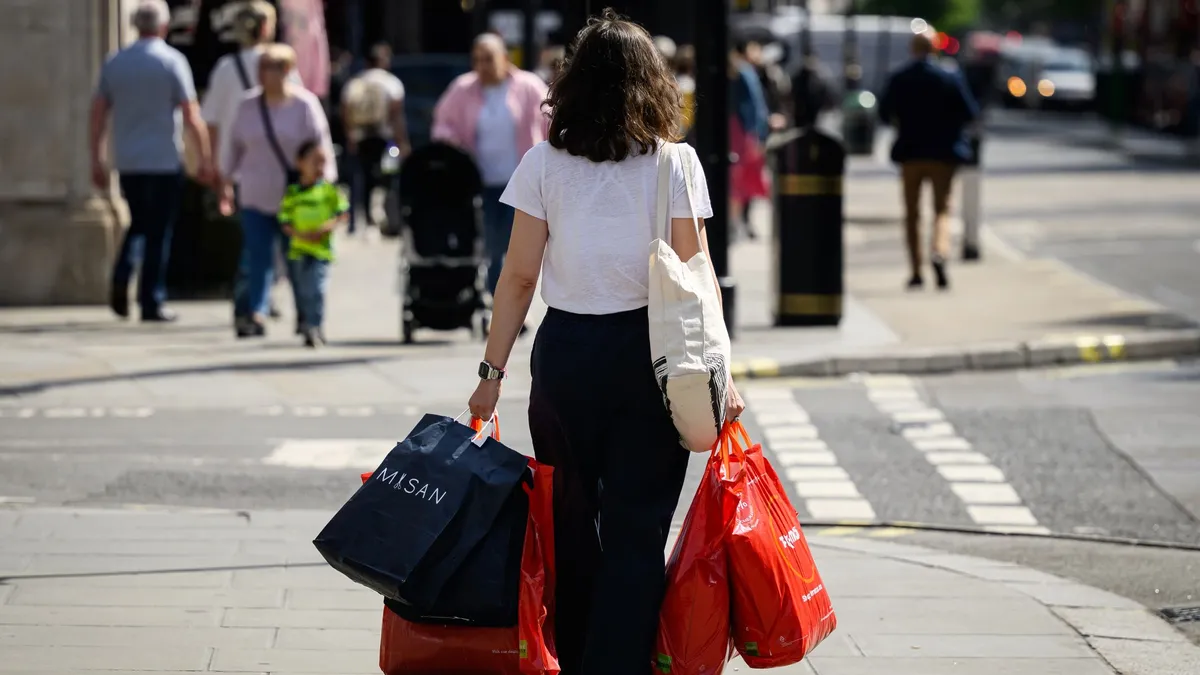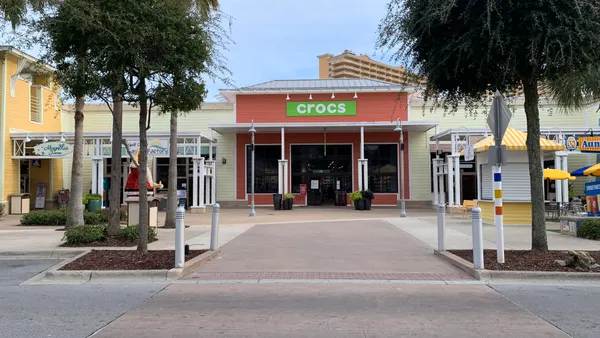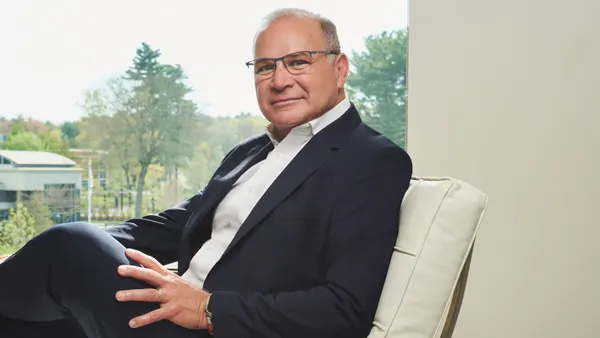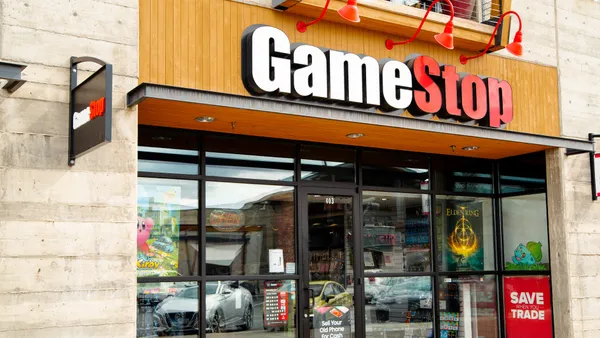Dive Brief:
-
J. Jill Inc. on Wednesday released updated guidance for its third quarter, warning of weaker than expected sales. The company releases its third quarter results, plus guidance for the fourth quarter and full fiscal year, on Dec. 5.
-
The company now expects same-store sales in the quarter to decline 3%-5%, with a "moderate" decline in gross margin compared to the year-ago quarter; in August the company had pegged a third-quarter same-store sales increase in the high single digits. FactSet analysts cited by MarketWatch had expected a 7.4% same-store sales boost.
-
The retailer also now expects adjusted diluted earnings of of 8 cents to 10 cents per share for the third quarter, (including some $0.6 million of non-recurring expenses associated with the company’s transition to a public company earlier this year). That’s a tumble from its previous expectation for 18 cents to 20 cents per share, and a miss of the FactSet analyst forecast for 19 cents per share, according to MarketWatch.
Dive Insight:
In her statement Wednesday, J. Jill CEO Paula Bennett said that merchandising and supply chain issues led to the letdown, which comes just months after the retailer’s initial public offering.
"We have been assessing the change in trend and have identified product and marketing calendar issues that are affecting traffic and conversion, and we are reacting quickly," she said. "Given our long track record of consistent sales and earnings growth driven by a strong connection with our customers, we are very disappointed with our soft sales trend. I am confident in the actions we are taking to regain momentum and once again delight our customer with the product and service experience she expects from us."
The disappointment arguably began with the retailer’s IPO in March, when it failed to meet its target price. Before re-joining Wall Street, J. Jill had demonstrated healthy growth, but like many private equity-owned companies, is loaded up with long-term debt of $244 million that's eating into profits.
J.Jill's full fiscal-year 2016 revenue was $617 million, up from $432 million in fiscal year 2012, according to the Boston Business Journal. The company said in that filing that digital sales grew 15% from $23 billion to $46 billion in 2015, while its brick-and-mortar sales were flat. J.Jill said then that it expected overseas sales to grow 4% percent annually. In the 26 weeks ended July 29, the retailer’s interest expense was $10 million, including $0.6 million of accelerated deferred financing amortization due to the voluntary principal pre-payment of $20 million dollars on the term loan in the second quarter, compared to $8.8 million in the same period last year, the company said in August.
The debt may be a distraction. J. Jill has boasted about its higher income customer base, but it hasn't made much of a splash with its merchandising, either in style or efforts like the inclusive sizing found at Nordstrom and elsewhere. But the largely mall-based retailer is likely also suffering from traffic declines at shopping centers nationwide that is leading landlords to back away from retail, opting to diversify their tenant base with food and entertainment.
Real estate advisory firm Reis last week reported that mall vacancy rates in the third quarter rose 0.2% to 8.3%, and mall rents rose just 0.2% in the quarter as most owners kept rents flat, according to a report emailed to Retail Dive. Mall vacancy increased in 34 of 77 U.S. metro areas, and the increase exceeded 0.2% in 24 of those. The effective rent declined in 12 metros. The increases were due to closures of J.C. Penney and Sears stores. From the prior-year quarter, the mall vacancy rate has increased 50 basis points from 7.8%, the lowest since 2008.
The actual retail in malls is in need of attention, too. Earlier this year Simon Property Group CEO David Simon urged retailers to invest in their stores, insisting that e-commerce isn’t the sole reason for their plight. "I'm hopeful that they're going to reinvest in their stores, improve their inventory mix and service their customer better," he said. "And, by the way, we've got to have the same pressure on us to do that. So, it's a two-way street. We are up for the challenge. We have the conviction in our business to do that as you know if you go through our properties by and large, they look, they feel great. We're going to redevelop a lot of opportunities."












